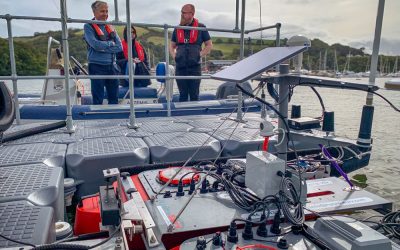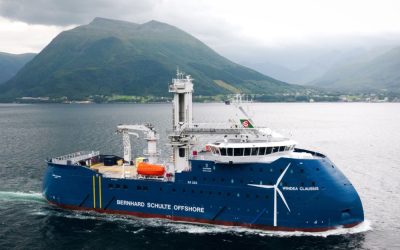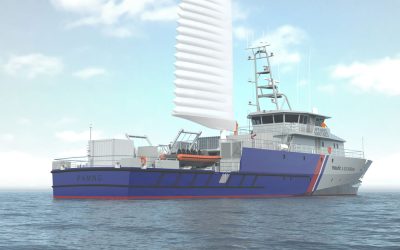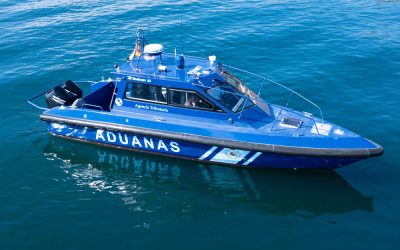Military and paramilitary vessels have long used stern-based launch and recovery systems for manned vessels, but how do you launch and recover a USV, and enable multiple USVs deployed in ‘swarms’ to operate truly independently of manned vessels?
These are some of the challenges Israel-based Sealartec and its founder Amitai Peleg set out to solve, as he tells The Naval Architect. Peleg and Sealartec business development director Dov Raz describe launch and recovery as the ‘missing piece’ in USV technology development, one that USV designers and builders – and manufacturers of recovery systems, such as stern ramps and davits – have failed to address.
Whilst working for a well-known company that designed and built high-end USVs, Peleg recognised that no-one was addressing launch and recovery. He began working on an autonomous solution, subsequently raising funds for an incubator programme. The launch and recovery concept he developed has now reached the point where Sealartec is collaborating with the US Navy, Israeli Navy and BAE Systems, Huntington Ingalls Industries, IAI and MARTAC among others, and its technology has been successfully tested in the US and elsewhere, most recently in June 2025 by the Naval Surface Warfare Center, using the Stiletto, a vessel that serves as a modular testbed for emerging technology.
“Without safe, reliable launch and recovery systems that can handle USVs in adverse conditions, use of USVs is going to be severely constrained,” says Peleg. Raz adds: “We knew there was a need for a system that would remove human operators from the process, that was fully autonomous. A conventional stern ramp used to launch and recover manned rigid-hull inflatable boats is heavily dependent on a human operator’s skill and is a risky, challenging process, but when used for USVs, their design limits quickly become a critical obstacle.”
Raz continues: “Dependence on direct hull-to-ramp contact exposes manned craft to relative motion effects, impact loads and control difficulties, especially in moderate to high sea states. When a large host vessel and a small craft interact in waves, their heave and pitch motions are out of phase. Fleets using conventional or extended stern ramps report increasing risk to boat and ship beyond sea state 3. At that point, the difference in vertical displacement between the mothership’s stern and the daughter craft’s bow often exceeds 2m, with relative pitch angles of over 10°. The result is an unpredictable recovery window and an increased likelihood of impact or loss of control.
“As vessel size increases, this phase mismatch worsens. Larger ship hulls have longer natural pitch periods, which means their stern moves differently than a smaller USV. In such cases, extending the ramp’s length or depth provides little improvement, and relative motion, not geometry, becomes the limiting factor.”
When recovering unmanned units, the consequences of these constraints become potentially serious, not least because of the impact forces from a USV on the hull of a mothership. Without any form of motion compensation, they say, a 10,000kg USV re-entering a launch platform at 5-10knots can generate vertical relative motion of over 2m/s, releasing enormous impact energy, sufficient to cause structural damage and damage sensors and electronics.
For the full story, check out the November/December 2025 issue of The Naval Architect




